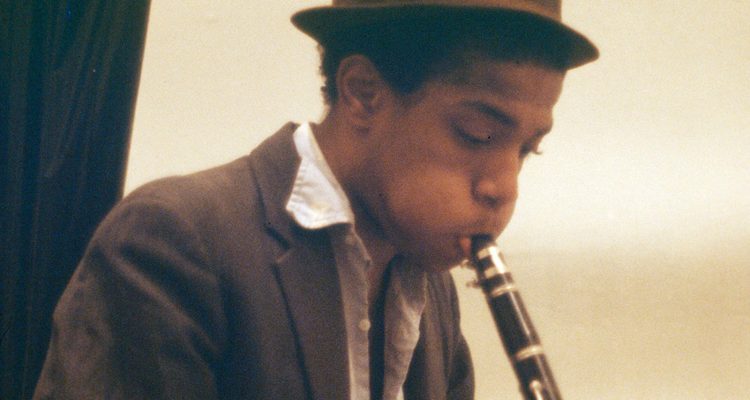“We wanted turbulence,” remembers critic Luc Sante in Sara Driver’s vivid and beautifully meditative memory piece on the downtown New York art and music scene of the late 1970s and early ‘80s, “Boom for Real.” As the ever-growing sub-genre of movies and books about that astoundingly fertile period have shown, turbulence they got.
Driver’s movie is a worthy, if sometimes familiar, addition to that canon. Technically, it’s a micro-targeted look at a highly specific period in the work of one artist. But the subtitle, “The Late Teenage Years of Jean-Michel Basquiat,” is more guiding principle than thesis. That’s a good thing because if all of the assembled luminaries had limited their observations to Basquiat alone, Driver wouldn’t have been left with as rich a trove of material. More importantly, she couldn’t have shown how one of the most emblematic American artists of the late 20th century found his voice in the rubble, before dying just a few years later at the age of 27.
As every story about this time period must, “Boom for Real” starts with catastrophe. Gerald Ford’s speech about how New York’s profligate spending lead to financial ruin plays over footage of Manhattan’s downtown blocks of 19th-century buildings. They are half-empty and starting to collapse, like the ruins of some once-great empire. Into this conveniently compact and affordable nexus flowed the artists, writers, musicians, and troublemakers whose collective work permanently changed the modern cultural language.
Jean-Michel Basquiat, an inquisitive and ambitious teenager from Brooklyn, appeared on the scene and quickly made it his own. A quick study and fizzing with ideas, Basquiat was a sponge who took in all the work being done around him and incorporated it into his own style. He was a charmer with a knack for drama and the mysterious. Filmmaker and friend Jim Jarmusch recounts a story to Driver about Basquiat dashing up to the two of them and dramatically presenting her with a rose he had probably just stolen. “He was always trying to steal all the girls,” Jarmusch laughs.
The friends and collaborators gathered by Driver collectively paint the portrait of an artist who wanted to make it big before almost any of the rest of them realized such a thing was possible. New music like the Talking Heads was churning at the Mudd Club, performance art was ripping up audience expectations at Club 57, and artists were defying the white-wall gallery establishment and that world’s sterile abstractions with their own loudly insurgent work.
Graffiti artists like Lee Quinones—who has some of the movie’s more affecting lines, particularly about the waste of downtown scenesters following the William S. Burroughs track of heroin suicide—and hip-hop pioneers like the effusive Fab 5 Freddy (who has made almost a career at this point at showing up in documentaries like this) brought uptown influences into the sometimes cloistered downtown scene. The imagery that Driver uses to stitch together her interviews with surviving members of the scene range from straightforward footage and still shots of the bombed-out brownstones and old industrial lofts of the Lower East Side and SoHo to the work of downtown filmmakers like James Nare—whose short “Pendulum” appears here, the long and uninterrupted arc of its swinging wrecking ball showing just how deserted those streets were.
Basquiat is here too, of course. Starting out with his “SAMO” tags and politically edgy blank verse wall scripts, he covered the gamut of the downtown art scene’s touchpoints, from avant-garde music (playing in the band Gray) to a Keith Haring-like self-branding interest in pushing hand-made clothes and postcards before moving into larger and more complex canvases.
But Driver isn’t trying to create a full portrait of the artist. In any case, that job was already ably completed by Tamra Davis’s 2010 documentary “Jean-Michael Basquiat: Radiant Child.” For Driver’s movie, Basquiat is a ghostly presence, popping up in snapshots or scraps of footage—it can seem as though every other person on the scene at that time wanted to be a filmmaker—like seeing him hanging out on the set of Glenn O’Brien’s uber-downtown public access show “TV Party.”
There’s a wandering element to Driver’s narrative. This isn’t surprising, coming from a filmmaker who has collaborated on similarly laconic Jarmusch work like “Stranger than Paradise” and “Permanent Vacation.” The moments that linger are more like Sante’s memory of the Polish bar on his block that left its doors open at night so that you could hear the Bobby Vinton-stocked jukebox down the street. “It was so quiet,” he remembers of the collapsing city. The best elements of Driver’s movie illustrate how these artists located the beauty in that ruin and made a great and turbulent racket in the quiet. [B-]
Follow along with all our New York Film Festival coverage here.

